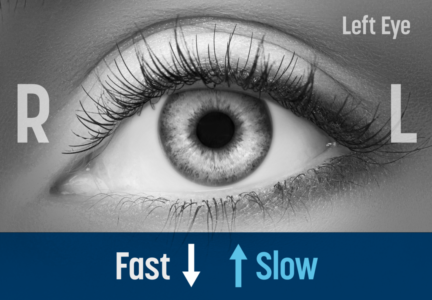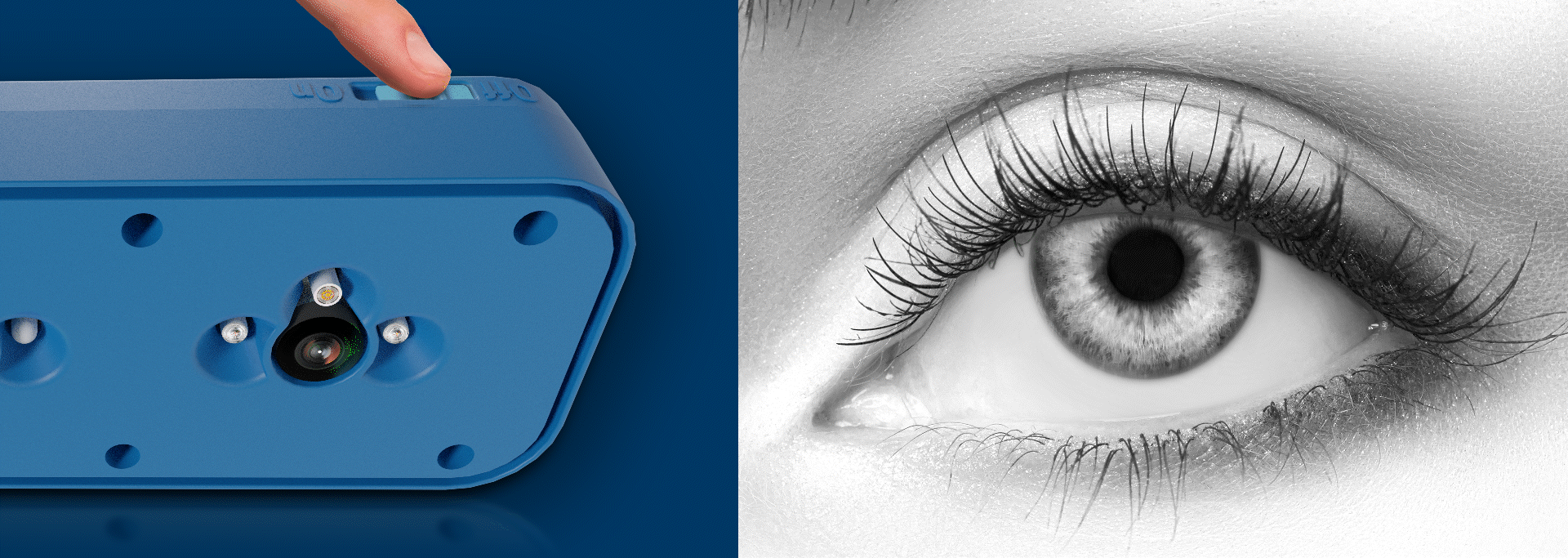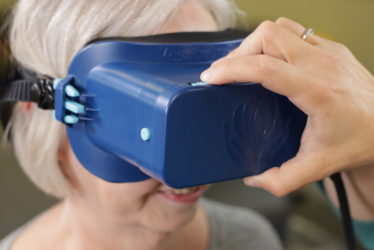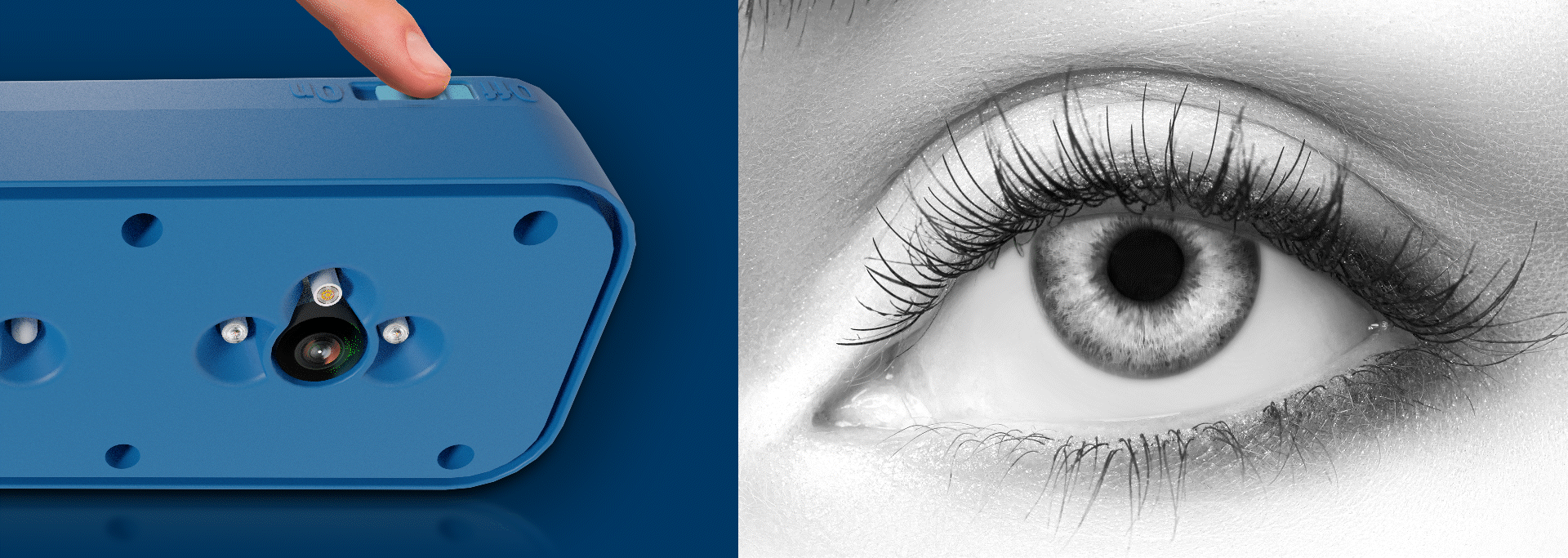downbeat nystagmus
What is nystagmus?
Nystagmus is an involuntary rhythmic side-to-side, up and down, or torsional (rotational) motion of the eyes that occurs with a variety of conditions. In many types of nystagmus, the eyes move quickly one direction and then more slowly the other direction.
What is downbeat nystagmus?
With downbeat nystagmus, the eyes move quickly down and then a bit more slowly up again. Downbeat nystagmus may be spontaneous (present at rest without any head or body movement), or it might be provoked by positional change. In fact, according to a study by Power et al. (2019), in 12% to 20% of cases, positional vertigo is due to central nervous system pathology, including cerebellar tumors.
Sometimes the difference in speed of a downbeat nystagmus is very subtle between the faster downbeat and the slower upbeat, or the duration of the nystagmus is short-lived, adding to the challenges of identifying the direction of the fast beat.

In which central vestibular conditions might downbeat nystagmus be observed?
The following is a list of medical conditions where downbeat nystagmus may be present:
- Cerebellar or brainstem stroke
- Vestibular migraine
- Brain injury
- Multiple sclerosis
- Tumors in the cerebellum or brainstem (pre- and post-op)
- Degenerative or hereditary cerebellar ataxia
Many of the conditions listed above are serious in nature, elevating the importance of proper visualization of the eye movements during a vestibular exam. An accurate diagnosis can help patients to go to the right next treatment steps for their particular medical condition sooner.
How can I best observe downbeat nystagmus?
Infrared video goggles can help clinicians to better visualize nystagmus, particularly for more subtle nystagmus or shorter bursts of downbeat nystagmus. Additionally, recording the eye movements using infrared video goggles allows for post-testing review, providing additional opportunities to clarify the direction of eye movement. Here is an excellent example of a downbeat nystagmus viewed by infrared video goggles (this nystagmus which is almost imperceptible in room light):
Is downbeat nystagmus a sign of a central vestibular issue?
As it turns out, the answer is often yes, but not always. Downbeat nystagmus is usually the sign of a central vestibular issue, but occasionally it will be a sign of benign paroxysmal positional vertigo (BPPV). With BPPV, tiny calcium carbonate crystals in our inner ear move from where they belong in the center part of our inner ear balance sensor into one or more of the semicircular canals that help sense our direction of head movement. When the crystals, or otoconia, shift in a canal, they give us a false sense of movement either of self or surroundings, often called vertigo. While the vertigo is occurring, there will often be nystagmus. If the otoconia are in the anterior canal, or the short arm of the posterior canal, they can cause downbeat nystagmus.
How can you use visual fixation lights to determine if there are any central findings?
With all of these considerations, the good news is that using the visual fixation lights on infrared video goggles can help a clinician differentiate between a downbeat nystagmus seen with anterior canal BPPV and a downbeat nystagmus due to a possible central vestibular issue during positional testing. Here are the steps a clinician can use during their testing process:
Step 1: Place the infrared video goggles on the patient. Press record on the software used with the goggles if desired, to allow for post-test review later.
Step 2: Place the patient in an appropriate positional test such as a Dix-Hallpike or Deep Head Hang Test.
Step 3: If downbeat nystagmus occurs, turn on the visual fixation lights.
Step 4: Differentiation and clinical decision making time! If the nystagmus diminishes or goes away when light is introduced, it is more likely that the source of the nystagmus is peripheral, such as in anterior canal or short-arm posterior canal BPPV. If the nystagmus remains unchanged, the source is more likely to be central in nature.
Step 5: If you suspect a central source of nystagmus, your next step would be to consult a physician (or order testing if you yourself are a physician) for possible work-up to rule out any serious previously undiagnosed neurological conditions. If BPPV is suspected, apply appropriate repositioning maneuvers such as the modified Epley or Deep Head Hang Maneuver.
Algorithm for differential diagnosis
The following flow chart can be used to help determine whether the downbeat nystagmus is more likely related to a peripheral vestibular condition such as BPPV or a central vestibular condition:

Eye movement changes that are consistent with a potential central vestibular condition
In contrast to the above, the video below demonstrates eye movements that are consistent with a potential vestibular condition if the following is observed:
- Eyes do not stop moving (nystagmus is not suppressed) when the visual fixation light is on
Note that just as in the prior condition, the pupil usually still constricts (unless a significant eye or brain issue is present).

How can I improve my ability to differentiate central from peripheral findings?
The industry standard for accurate differential diagnosis is infrared video goggles. Developed in the 1970’s, infrared goggles, sometimes called “video frenzels” can easily show a clinician the eye movements with and without visual fixation. This is critical in providing patients with a clear path forward with their diagnosis.

In the past, price was a barrier to access infrared video goggles technology. Vestibular First Insight Infrared Video Goggles remove that barrier for many, while at the same time increasing your accuracy with diagnosis and treatment of vestibular conditions. To learn more, schedule a demo today. In addition, please sign up for our free Journal Clubs and quarterly email newsletter. Keep adding to your vestibular know-how and technology toolbox, because knowledge is the key to empowering clinicians who can in turn empower their patients to a better tomorrow!
References
Cho BH, Kim SH, Kim SS, Choi YJ, Lee SH. Central positional nystagmus associated with cerebellar tumors: Clinical and topographical analysis. J Neurol Sci. 2017 Feb 15;373:147-151.
Halmagyi GM, McGarvie LA, Strupp M. Nystagmus goggles: how to use them, what you find and what it means. Pract Neurol. 2020 Dec;20(6):446-450.
Helminski JO. Peripheral Downbeat Positional Nystagmus: Apogeotropic Posterior Canal or Anterior Canal BPPV. J Neurol Phys Ther. 2019 Apr;43 Suppl 2:S8-S13.
Hirvonen TP, Juhola M, Aalto H. Suppression of spontaneous nystagmus during different visual fixation conditions. Eur Arch Otorhinolaryngol. 2012 Jul;269(7):1759-62.
Joshi P, Mossman S, Luis L, Luxon LM. Central mimics of benign paroxysmal positional vertigo: an illustrative case series. Neurol Sci. 2020 Feb;41(2):263-269.
Kattah JC, Badihian S, Pula JH, Tarnutzer AA, Newman-Toker DE, Zee DS. Ocular lateral deviation with brief removal of visual fixation differentiates central from peripheral vestibular syndrome. J Neurol. 2020 Dec;267(12):3763-3772.
Lemos J, Strupp M. Central positional nystagmus: an update. J Neurol. 2021 Oct 20.
Musat GC, Musat AAM. Multiple Sclerosis Presenting as an Anterior Semicircular Canal Benign Paroxysmal Positional Vertigo: Case Report. Ear Nose Throat J. 2021 Sep;100(5_suppl):636S-640S.
Pohl M, Hesszenberger D, Kapus K, Meszaros J, Feher A, Varadi I, Pusch G, Fejes E, Tibold A, Feher G. Ischemic stroke mimics: A comprehensive review. J Clin Neurosci. 2021 Nov;93:174-182.
Power L, Murray K, Bullus K, Drummond KJ, Trost N, Szmulewicz DJ. (2019 Jul). Central Conditions Mimicking Benign Paroxysmal Positional Vertigo: A Case Series. J Neurol Phys Ther. 43(3):186-191.
Strupp M, Hüfner K, Sandmann R, et al. Central oculomotor disturbances and nystagmus: a window into the brainstem and cerebellum. Dtsch Arztebl Int. 2011;108(12):197-204.
Strupp M, Mandalà M, López-Escámez JA. Peripheral vestibular disorders: an update. Curr Opin Neurol. 2019 Feb;32(1):165-173.
West PD, Sheppard ZA, King EV. Comparison of techniques for identification of peripheral vestibular nystagmus. J Laryngol Otol. 2012 Dec;126(12):1209-15.

